Lean
Dates
April to May 2015
Built With
Greta Gardner, Andy Mah, Jonathan Shum
Mission
To create a transformational chair for a variety of seating experiences.
Tagline
LEAN: Your chair. Any way you want it.
Technologies
Adobe Illustrator, CNC Router
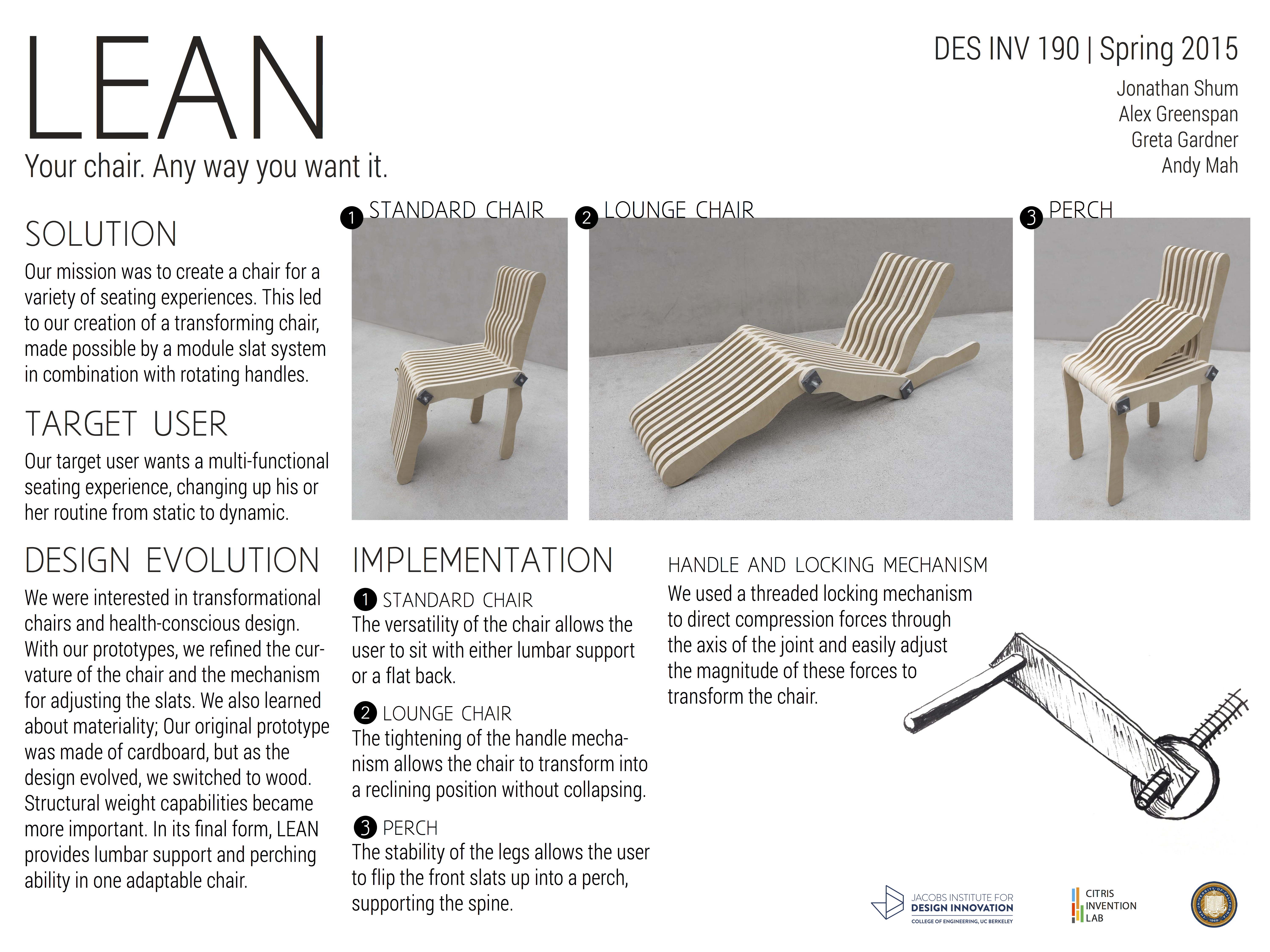
Featured project on the Jacobs Institute for Design Innovation website.
Background
Sitting for long periods of time day after day can lead to health issues. We designed a chair geared towards education and taking a step toward solving this problem. Lean takes passivity out of sitting by putting the user in charge of the seating experience and how often to switch up the chair’s shape.
The form factor of Lean also makes a difference. Two-thirds of the slats that make up the chair are the exact same curved shape, which creates a dramatic aesthetic effect as well as provides lumbar support throughout the chair’s various positions. The seat itself is also not perfectly flat, adding a more natural and comfortable surface for whoever is sitting.
Prototyping
In earlier prototypes, we knew we wanted the convertability between chair and perch. What we didn’t know is the best way to execute the transformations.
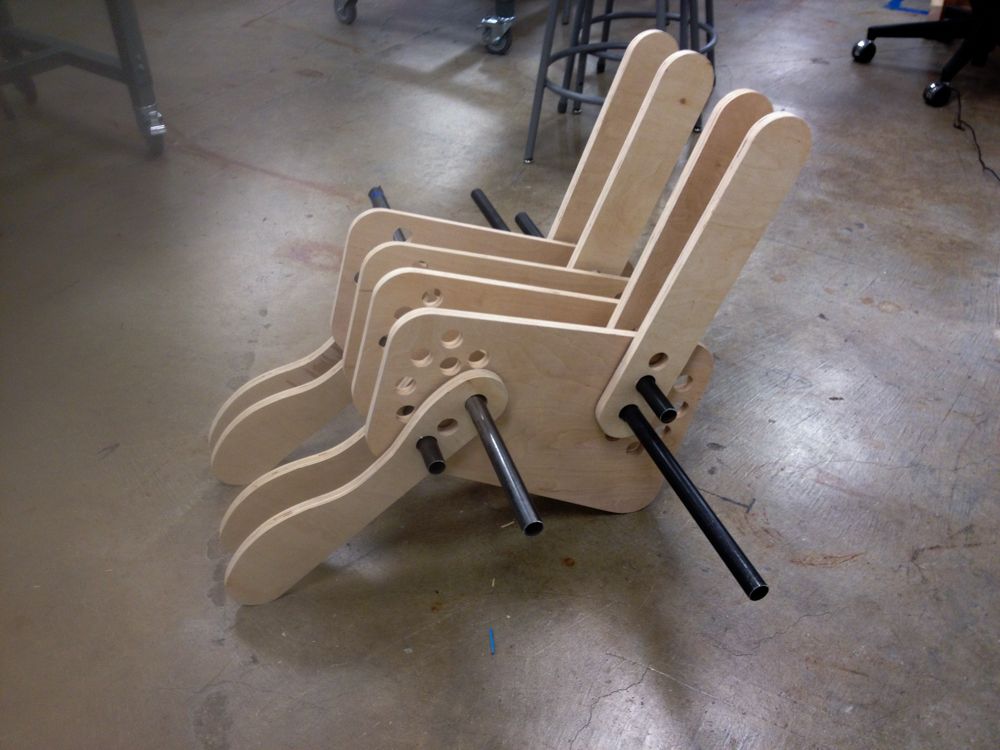 Prototype in chair form
Prototype in chair form
 Prototype in perch form
Prototype in perch form
Throughout the design process, we streamlined both the design of the chair, with slimmer and curvier slats, as well as the transformation mechanism of the chair. While our early prototype used long metal poles that had to be pulled in and out to change the shape, eventually we decided on a threaded locking mechanism that simply involved a handle to turn — while still not 100% ideal, the new mechaism was much more user-friendly.
Final design
For our final design, we wanted to highlight three forms of Lean that best tackled the health issues stemming from the chairs of today.
Perch
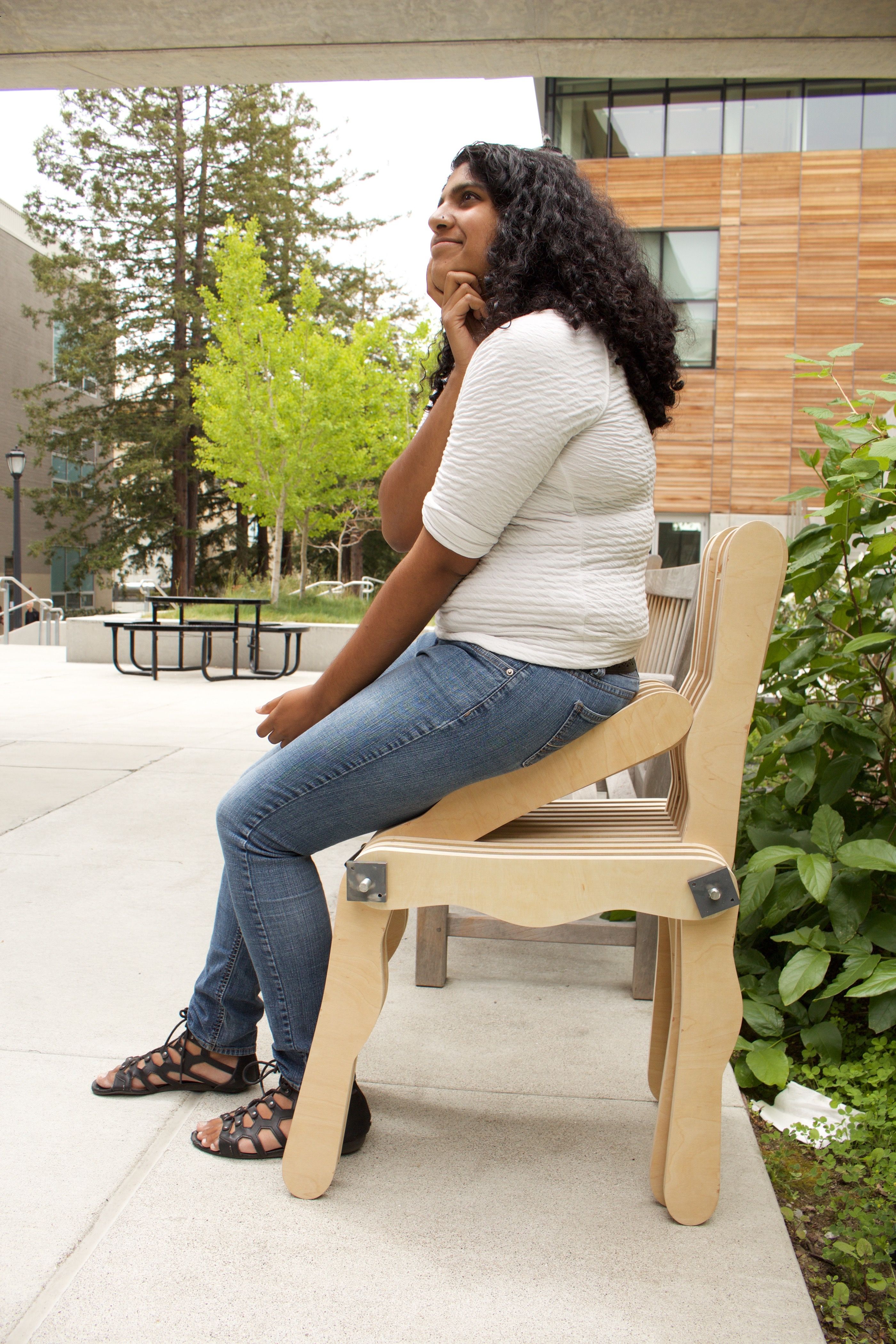 Right in between sitting and standing, this position allows you open up your pelvis with your legs down and outwards. In this position, one does not require back support, and you are sitting in a neutral position. Seat height: 24” with a 30 degree seat.
Right in between sitting and standing, this position allows you open up your pelvis with your legs down and outwards. In this position, one does not require back support, and you are sitting in a neutral position. Seat height: 24” with a 30 degree seat.
Lounge
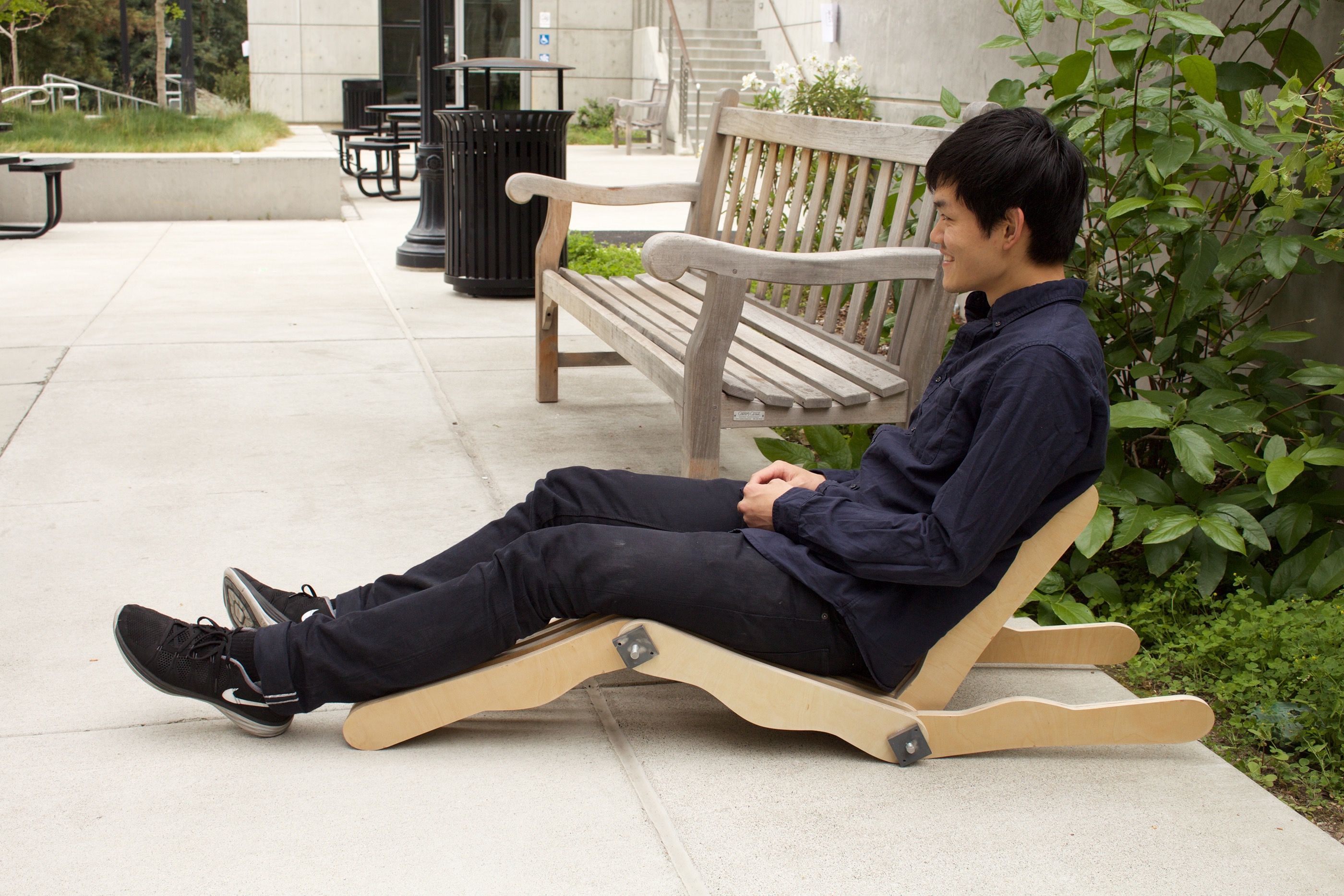 The intersection between sitting and lying down. Here your body is fully supported, and the load is taken off your spine.
The intersection between sitting and lying down. Here your body is fully supported, and the load is taken off your spine.
Chair with lumbar support
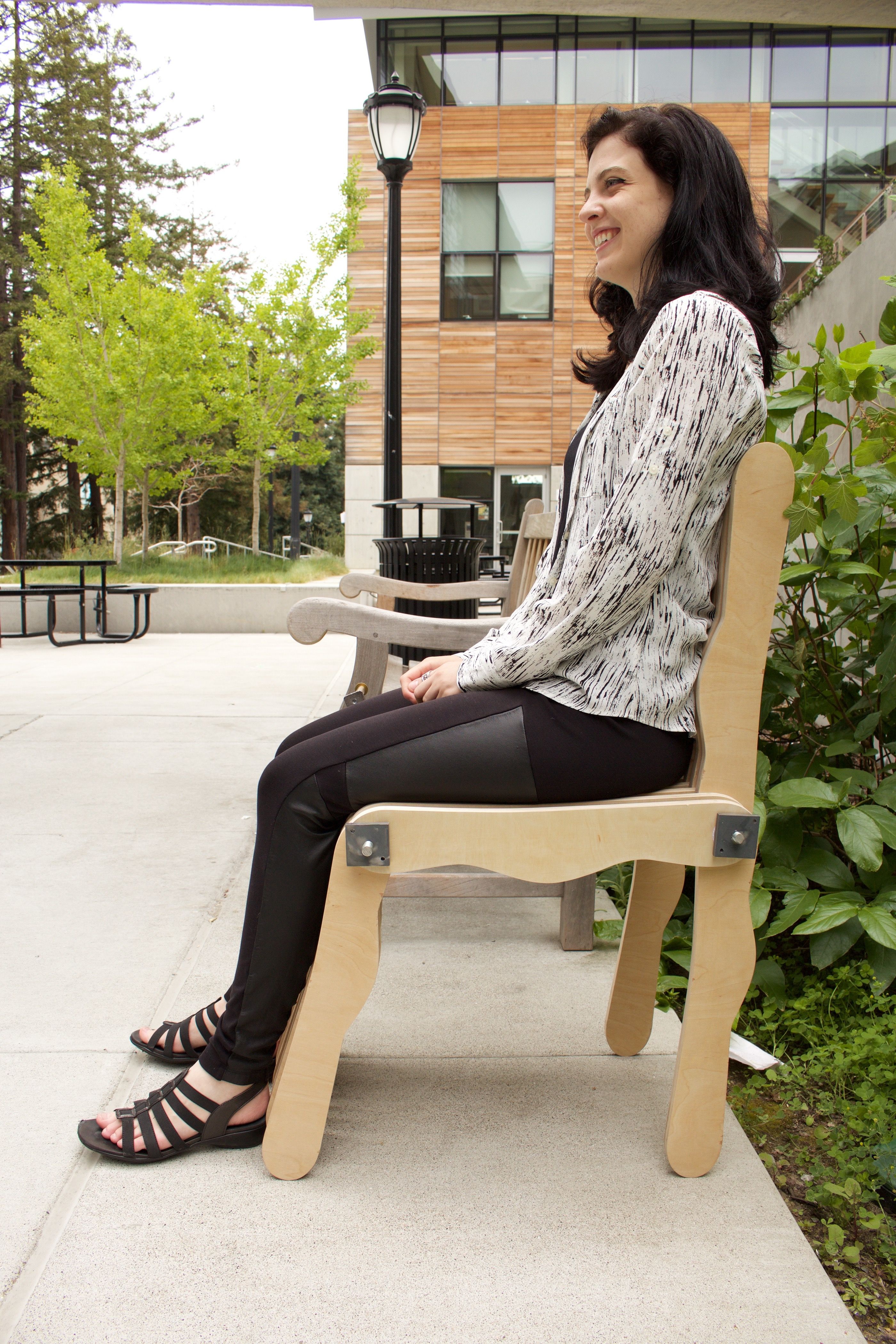 Lumbar support helps keep the natural inward curvature of the lower spine. It also keeps the ears, shoulders, and hips aligned. Seat height: 17”
Lumbar support helps keep the natural inward curvature of the lower spine. It also keeps the ears, shoulders, and hips aligned. Seat height: 17”
Some of the hardest parts of finalizing our design included figuring out the best angle for the perch and curvature for the lumbar support. Both of these features are understudied, and so the team really went through trial-and-error.
Other transformations
When we displayed our chair to the public, we recieved a lot of amazing feedback in terms of other chair shapes people wanted to try out. Just a few are shown below.
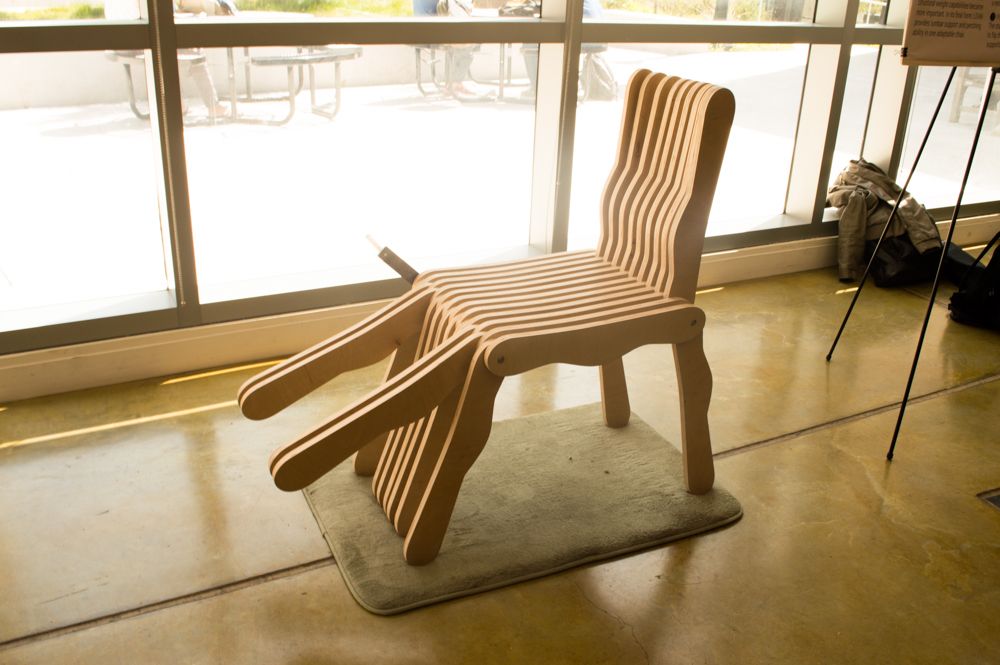 Extremely customizable. Could potentially help with physical therapy.
Extremely customizable. Could potentially help with physical therapy.
 Turn the chair into a table as well to support laptops, books, food…you name it!
Turn the chair into a table as well to support laptops, books, food…you name it!
We also heard feedback on even more versatile ways the three main transformations can be used. For example, a violinist noted that she would love to sit in the perch while playing violing, because normal chairs don’t support the best posture needed for playing.
And when your day is done and you need to take the chair on the go, many noted its compact form for work-to-home transportability.
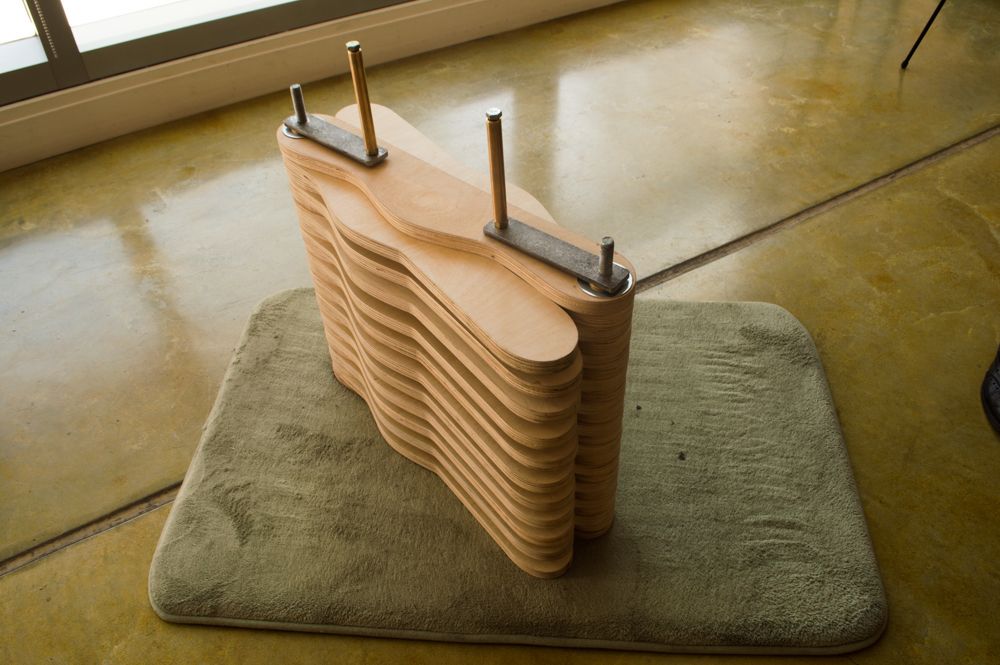 Space efficient for transportation
Space efficient for transportation
Conclusion
 Display of Lean, complete with mini prototype and poster
Display of Lean, complete with mini prototype and poster
In conclusion, there are definitely many more possibilities for Lean to improve and expand. We see large-scale manufacturing a possibility if we wanted to market the chair broadly, as the slats are already the same shape. We’d also like to play with materials, to find something that is still sturdy yet cheaper or better for different weather conditions. No matter what, we want Lean to stay true to its core purpose, and inspire people to make health-conscious decisions, even with something as deceptively simple as a chair.
 The Lean Team
The Lean Team
